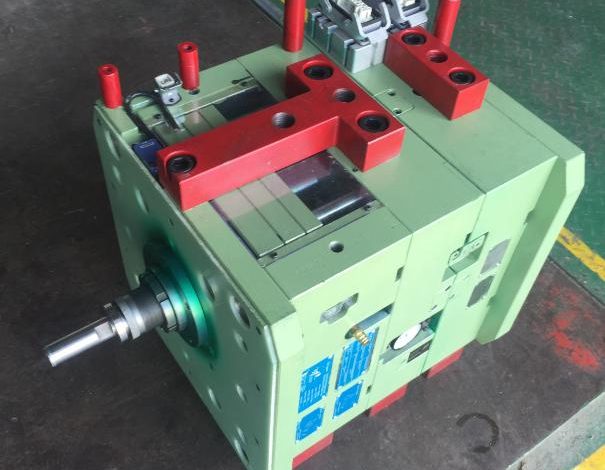A Comprehensive Guide to Plastic Injection Molding

Plastic injection molding is a common manufacturing process used to make a wide variety of plastic parts and products. This guide will cover everything you need to know about injection molding including the process, materials, applications, design considerations, and leading manufacturers like automotive bumper mould and automotive injection mould makers. Keep reading to learn all about plastic injection moulding and how it works.

What is Plastic Injection Molding?
Plastic injection molding, sometimes known as injection molding, is a manufacturing process used to make plastic parts and products. It involves injecting molten plastic material into a mold cavity where it cools and hardens into the final part shape.
It is popular for mass production because it is fast and scalable. The process produces consistent, high-quality parts, so it is commonly used across industries like automotive, medical, consumer products, electronics, packaging and more.
The Process Step-By-Step
Plastic molding follows a relatively straightforward step-by-step process:
- Plastic pellets are fed into the injection molding machine through a hopper.
- The pellets are heated to melt them into a liquid state. This usually happens in the injection unit through conduction and shear heating.
- Next, the molten plastic is injected at high pressure into the mold cavity through the injection nozzle.
- The mold remains closed as the plastic cools and solidifies into the final part shape.
- After proper cooling, the mold opens and the finished plastic part is ejected.
- The part is then trimmed of any excess plastic flash.
- Finally, the part undergoes any secondary finishing processes like painting, printing, assembling, etc.
This full cycle then repeats to create each new injection molded part.
Common Plastic Materials Used in Injection Molding
There are many types of plastic materials used in the injection molding process. Some of the most popular include:
- Polypropylene (PP) – Versatile, low cost material often used for containers and packaging.
- Acrylonitrile butadiene styrene (ABS) – Durable plastic used for automotive parts, electronics, appliances.
- Polyamide (PA) – Also known as nylon, used for mechanical parts. High strength and heat resistance.
- Polycarbonate (PC) – Clear, glass-like material with good impact resistance and durability.
- Polyethylene (PE) – General purpose plastic with high chemical resistance. Low cost.
- Polyvinyl chloride (PVC) – Strong but lightweight plastic used for pipes, siding, bottles.
The type of plastic chosen depends on the application and product requirements like strength, flexibility, heat resistance, durability etc.
Key Applications of Injection Molded Plastic Parts
Because it is so versatile, injection molding is used to make parts and products across virtually every industry, including:
- Automotive – Interior and exterior components like bumpers, dashboards, door panels and more.
- Medical – From syringes and IV parts to surgical instruments and testing equipment.
- Consumer goods – Household items like furniture, storage, kitchenware and toys.
- Electronics – Cases, connectors and insulators for computers, appliances and other devices.
- Packaging – Bottles, containers, caps and other packaging.
Injection molding produces very consistent, high-quality parts suitable for mass production. This makes it an ideal process for all kinds of plastic products.
Design Considerations for Injection Molded Parts
Proper part and mold design is critical for injection molding. Here are some key design considerations:
- Draft angles – Tapered surfaces that allow parts to be easily out off the mold.
- Uniform wall thickness – Prevents defects like warpage and sink marks.
- Radius corners – Generous radii distribute stress.
- Ribs and gussets – Can provide strength and rigidity while minimizing weight.
- Boss design – Bosses transfer loads to the part and prevent fasteners from pulling out.
- Avoid sinks and voids – Changes in wall thickness can create these defects in the part.
Working closely with an experienced injection molding company during the design phase helps ensure manufacturability and maximize quality.
Finding a Reliable Injection Molding Manufacturer
Selecting the right injection molding company is key to getting high-quality plastic parts efficiently and cost-effectively. Here are some tips for choosing an injection molder:
- Look for experience working with your target plastic material like automotive bumper mould or other applications. This ensures proper knowledge and process capability.
- Consider production capacity and scalability. Larger firms can meet higher volume needs.
- Evaluate quality control standards and testing equipment. This ensures consistency.
- Look for expertise in mold design and fabrication for optimizing part manufacturability.
- Choose a responsive, communicative partner who can provide engineering support.
Leading injection molding companies like My Plastic Mold specialize in manufacturing high-quality automotive injection moulds, appliances, consumer products and medical devices. Their expertise and capabilities make them ideal partners.
The Benefits of Plastic Molding
There are many benefits that make injection molding a prevalent manufacturing process, including:
- Consistency – The automated, repeatable process ensures uniformity part-to-part.
- Efficiency – High production rates and low labor costs make it efficient and scalable.
- Flexibility – Various plastic materials can meet requirements.
- Quality – Parts have excellent surface finishes straight from the mold.
- Cost-effectiveness – Ideal for mass production due to low per-part costs.
- Simplifies assembly – Complex parts can be as single components.
When designed and produced properly, injection molded plastic parts offer versatility, quality and value that fit the needs of countless applications.
Conclusion
Plastic injection molding is a versatile manufacturing process suitable for high volume production across many industries. It repeatedly injects plastic into a mold to create consistent, net-shape plastic parts. With proper design and process expertise, injection molded components offer strength, durability, and value in the final product. Leading manufacturers like My Plastic Mold specialize in injection moulding high-quality automotive and consumer products.



